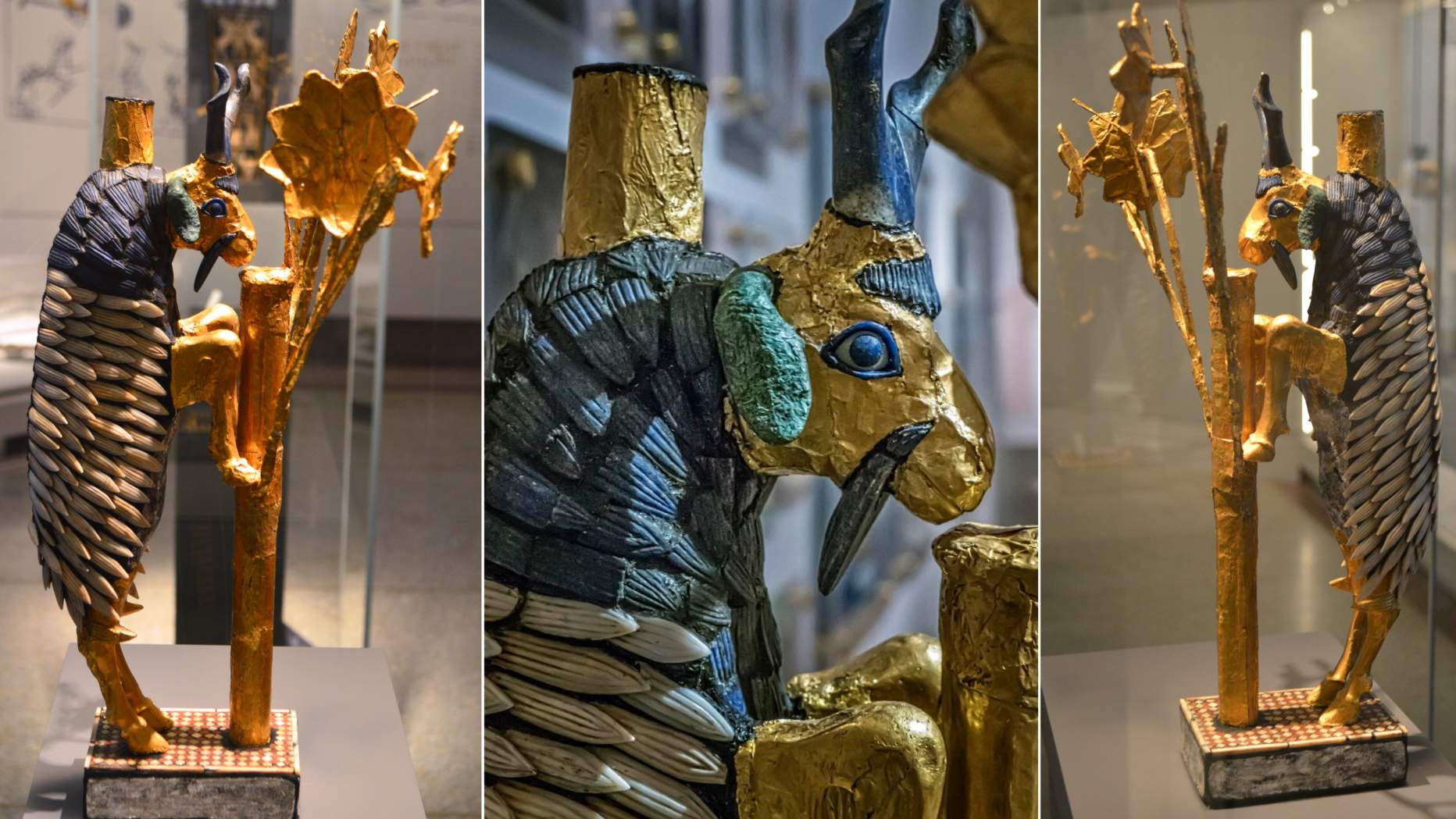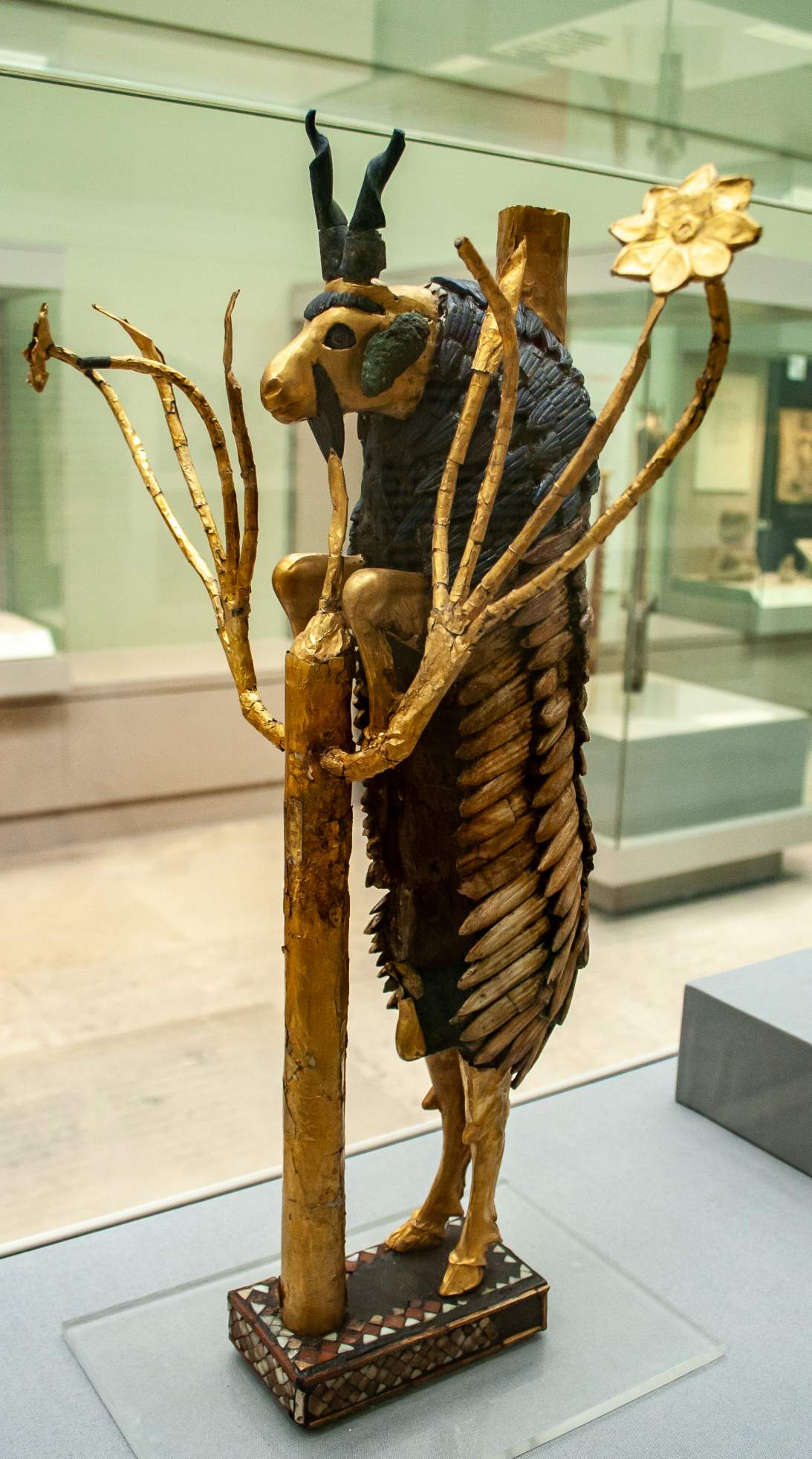The richness of ancient Mesopotamian civilization is best exemplified through its remarkable artifacts. Among these treasures, the Ram in a Thicket holds a special place as one of the greatest and most iconic relics from the Early Dynasty period. Apart from its artistic excellence, the artwork also has historical significance and intriguing symbolism behind it which makes it one of the greatest ancient artifacts in the world.

The Ram in a Thicket: A mesmerizing masterpiece
The Ram in a Thicket is a captivating sculpture that stands approximately 1.51 meters tall and is believed to date back to the 3rd millennium BCE. Carved from limestone, it depicts a male sheep, intricately interwoven within a thorny thicket. The remarkable craftsmanship and attention to detail display the expertise of the ancient artisans who created this masterpiece.
Ancient symbolism
The Ram in a Thicket has captured the attention of art enthusiasts and historians due to its symbolic significance in cultural beliefs of ancient Mesopotamians. Firstly, the ram stands as a powerful symbol of fertility and abundance in Mesopotamian mythology, often associated with the god of agriculture and fertility, Dumuzid (also known as Tammuz).
Additionally, the thorny thicket enveloping the ram is a profound metaphor for the cyclical nature of life and death. It symbolizes the transition from life to the afterlife, possibly alluding to the journey of the deceased into the realm of the divine. By embodying elements of nature and representing fertility, strength, and divinity, this artifact serves as a sacred offering to the gods.
The historical context
This masterpiece was discovered by archaeologist Sir Leonard Woolley during excavations at the Royal Cemetery of Ur in Southern Mesopotamia (present-day Iraq) in 1928. The cemetery, which dated back to the Sumerian Early Dynastic Period (2600-2500 BCE), contained the remains of a royal couple, surrounded by an opulent array of funerary offerings — the lavish treasures associated with religious rituals and royal ceremonies.
The Ram in a Thicket was found in a chamber tomb and has since become one of the most precious artifacts ever unearthed from this region. It is believed that this sculpture played a significant role in their burial rituals or was meant to accompany them in the afterlife, reflecting their high status and the importance of symbolism in funeral practices.
Sublime craftsmanship
The Ram in a Thicket is expertly crafted using a combination of gold leaf, lapis lazuli, and shell, with a wooden core providing structural stability. This hybrid technique exemplifies the multidimensional and skillful craftsmanship of the Mesopotamians. The attention to detail is remarkable, with the intricate curls of the ram’s horns and the meticulously carved fleece of its coat. The careful incorporation of precious materials further accentuates the sculpture’s divine and regal demeanor.

Religious offerings
The Ram in a Thicket symbolizes an offering to the gods, a common practice in ancient Mesopotamian religious beliefs. The ram was considered a sacred animal associated with fertility and divinity. By presenting this sculpture, the Mesopotamians sought to express their devotion and appeal for divine favor in various areas of life, such as agricultural abundance and protection from natural disasters.
It influenced beyond the ancient Mesopotamian civilization
The Ram in a Thicket’s influence extends beyond the ancient Mesopotamian civilization. Numerous replicas and variations of this sculpture have been created throughout history, reflecting its timeless appeal. The discovery of this artifact and others like it at Ur has provided valuable insights into the art, culture, and religious practices of this ancient civilization, enriching our understanding of the past.
Final thoughts
The Ram in a Thicket stands as an extraordinary testament to the artistic achievements and religious devotion of the Mesopotamian Early Dynasty era. Its impeccable craftsmanship, symbolic significance, and historical context make it a vital artifact in understanding the cultural legacy of ancient Mesopotamia. As we continue to uncover and appreciate such extraordinary relics, we gain deeper insights into the artistic brilliance and spiritual life that flourished millennia ago.
After reading about the Ram in a Thicket, read about Obsidian: The sharpest tools of the ancients are still in use, then read about The mystery of the 7,000-year-old Ubaid lizardmen: Reptilians in ancient Sumer??



